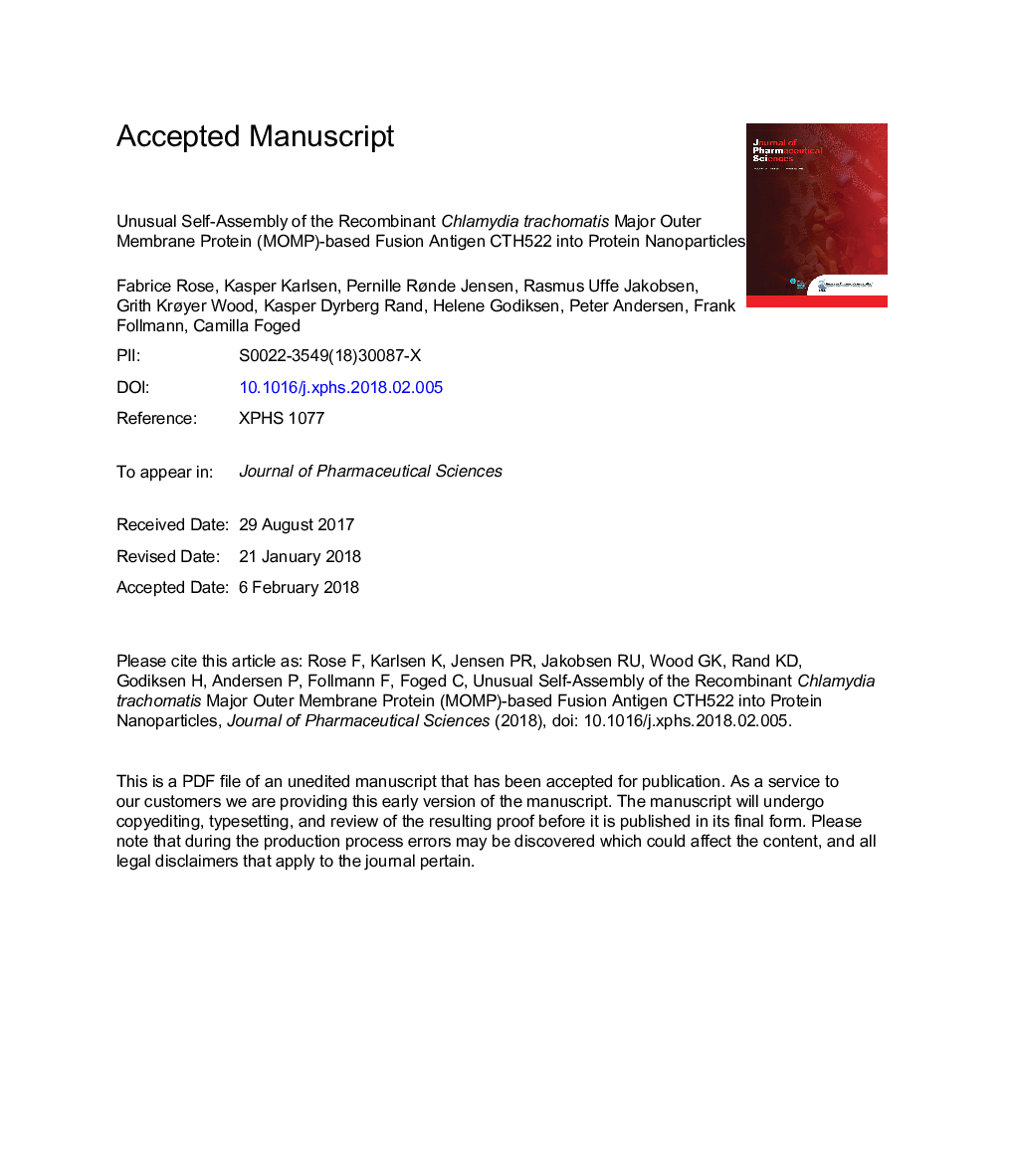| Article ID | Journal | Published Year | Pages | File Type |
|---|---|---|---|---|
| 8513297 | Journal of Pharmaceutical Sciences | 2018 | 39 Pages |
Abstract
Sexually transmitted Chlamydia trachomatis infects more than 100 million people annually, and untreated chlamydia infections can cause severe complications. Therefore, there is an urgent need for a chlamydia vaccine. The Ctrachomatis major outer membrane protein (MOMP) is highly immunogenic but is a challenging vaccine candidate by being an integral membrane protein, and the immunogenicity depends on a correctly folded structure. We investigated the biophysical properties of the recombinant MOMP-based fusion antigen CTH522, which is tested in early human clinical trials. It consists of a truncated and cysteine-free version of MOMP fused to 4 variable domains from serovars D-G. In the native state, CTH522 did not exist as a monomer but showed an unusual self-assembly into nanoparticles with a negative zeta potential. In contrast to the β-barrel structure of MOMP, native CTH522 contained no well-defined secondary structural elements, and no thermal transitions were measurable. Chemical unfolding resulted in monomers that upon removal of the denaturant self-assembled into higher order structures, comparable to the structure of the native protein. The conformation of CTH522 in nanoparticles is thus not entirely random and contains structural elements stabilized via denaturant-disruptable hydrophobic interactions. In conclusion, CTH522 has an unusual quaternary structure of supramolecular self-assemblies.
Keywords
Related Topics
Health Sciences
Pharmacology, Toxicology and Pharmaceutical Science
Drug Discovery
Authors
Fabrice Rose, Kasper Karlsen, Pernille Rønde Jensen, Rasmus Uffe Jakobsen, Grith Krøyer Wood, Kasper Dyrberg Rand, Helene Godiksen, Peter Andersen, Frank Follmann, Camilla Foged,
